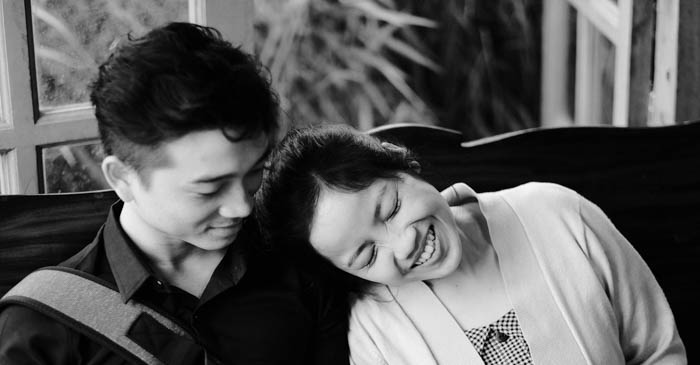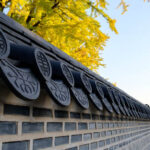
May is Asian/Pacific American Heritage Month! To celebrate and remember Korean American heritage, this article will feature three works of Korean American literature that reflect the experiences of Korean immigrants in the US. The three chosen works—The Dreams of Two Yi-Min by Margaret K. Pai, The Foreign Student by Susan Choi, and A Cab Called Reliable by Patti Kim—represent Korean American immigrants who arrived in the US during the three different waves of Korean immigration.
If, after reading about the books, you’d like to learn more about the history of the three waves of Korean immigration to the US, additional information is provided at the end of the article.
The Dreams of Two Yi-Min by Margaret K. Pai
In her 1989 memoir The Dreams of Two Yi-Min, Margaret K. Pai—the daughter of two first-wave immigrants—represents Korean American life in Hawaii. The memoir starts at the beginning of the twentieth century, moves through the Great Depression, and goes past World War II, detailing historical events along the way.
“Yi-min” means “immigrant” in Korean, and the two immigrants about whom Pai writes are her mother, Hee Kyung Lee, and her father, Do In Kwon. Hee Kyung arrives in Honolulu as a “picture bride” in 1912 at eighteen years old. Do In arrives earlier in 1905 as a contract sugar plantation worker around the same age.
The seven-year difference between their emigration dates from Korea means that while Hee Kyung experienced life in Japanese-occupied Korea, Do In did not. This difference plays out in how they work for their two American dreams. As Hee Kyung applies her energies to the Korean independence movement, Do In focuses on work.
At first glance, the two seem to see their dreams come true. For Hee Kyung, Japan’s rule over Korea eventually ends. For Do In, he and his family come to own and run a successful furniture shop that he can pass onto the next generation. From this, it can seem a lot like Pai’s parents represent the idealized narrative of the hard-working American immigrant getting their slice of the American dream.
Nevertheless, by the end of the memoir, we learn that they both don’t quite get what they want. Disasters beyond their control shatter both Hee Kyung’s and Do In’s dreams, and their stories conclude on a sour note.
The Foreign Student by Susan Choi
In Susan Choi’s 1998 debut novel The Foreign Student, Chang Ahn, or “Chuck,” arrives at the University of the South in Sewanee, Tennessee. It is 1955, he’s 25 years old, and he would have been a part of the second wave of Korean immigrants to the US.
What Chuck finds in Tennessee is a world vastly unlike the one he’s just left. The baffling distance between the trauma of the Korean War and his new life in the American South generates a stark divide between Chuck’s interior and exterior lives.
Though Chuck worked in Korea as a translator for American soldiers, once he’s in Tennessee, he finds himself somewhat tongue-tied. This is not only because his English is halting, but also because others in America ask him about the war, what it was like, what he thinks about it, even if he appreciates it.
Chuck can’t find the right answers to these ignorant questions, and his inability to find the words to describe the war and his experiences frustrates him and makes him outwardly appear less-than-eloquent and almost innocent.
Nevertheless, within himself, Chuck remembers the experiences of the Korean War vividly. The novel details his past travails in Korea, including the gruesome torture he endures on Jeju Island.
The traumatization that Chuck undergoes during the Korean War plays a striking counterpoint against his relationship with the other main character of the novel, Katherine Monroe, a twenty-eight-year-old white woman who also has a troubled past.
After Katherine and Chuck repeatedly run into each other by accident, Chuck finds a friend—and later, a romantic interest—in Katherine. Together they are able to heal and confront their pasts, but this does not come without difficulty, and all is not rosy for the couple in the end.
A Cab Called Reliable by Patti Kim
Author Patti Kim was born in Korea in 1970 and immigrated to the US in 1974. In Kim’s 1997 debut novel A Cab Called Reliable, the protagonist, Ahn Joo Cho, moves from Busan to Arlington, Virginia when she is seven. This makes her a part of what is called the “1.5 generation” of Korean Americans, or those who were born in Korea but grew up in the US.
Unlike the trope of the third-wave Korean immigrant successfully assimilating into American culture and accumulating wealth, the picture we get of Ahn Joo’s world is far from the model-minority narrative.
In America, Ahn Joo’s parents’ abusive and dysfunctional marriage deteriorates, and when Ahn Joo is eight, her mother takes off with her younger brother in tow, leaving Ahn Joo behind in a sky-blue taxi that has “Reliable” printed on the door.
The young and confused Ahn Joo, who remembers bits of her childhood in Korea and does not yet understand her new surroundings, yearns and hopes for her mother to return, as she is now forced to live alone with her abusive alcoholic father.
As the years pass with no word from Ahn Joo’s mother, the relationship between Ahn Joo and her father dramatizes the conflicts that emerge between a 1.5-generation Korean immigrant daughter and her first-generation Korean immigrant father.
While Ahn Joo is socialized in the American education system and absorbs American culture and values, her father seems to remain stagnant in his lack of ambition while stubbornly pressuring Ahn Joo to fulfill conservative Korean expectations for women and girls. As Ahn Joo comes of age, she must learn to navigate the world on her own as she takes care of both herself and her father.
By the end of the novel, life and time have taken their toll on Ahn Joo, her father, and their relationship. What offers Ahn Joo a bit of respite throughout her difficult childhood, adolescence, and young adulthood is her discovery of her talent for writing and storytelling, which become personal sources of power, meaning, and healing.
The Historical Context
This has been just a cursory exploration of Korean American immigrant experiences in three celebrated works of Korean American literature. Though these literary works provide us with powerful images of Korean immigrant lives in the US, there is much more to the history of Korean immigration to the US than any single book can contain.
If you’re interested in the historical background that informs these three works and would like to learn more about the history of the three waves of Korean American immigration, you can continue reading below.
The First Wave of Korean Immigration to the US
In The Dreams of Two Yi-Min by Margaret K. Pai, we read about two first-wave immigrants and their experiences in Hawaii. This first wave of immigration from Korea was set off when the Chinese Exclusion Act of 1882 banned Chinese labor, and the Hawaiian pineapple and sugar plantation owners’ original source of cheap labor was gone.
It was then that American missionaries began recruiting Koreans to labor in Hawaii to meet the new demand. Between 1903 and 1905, a total of 7,226 Koreans immigrated as contract laborers to Hawaii. In addition to providing cheap labor, early Korean immigrants were used by plantation owners as strikebreakers against Japanese sugarcane workers.
The recruited laborers were largely uneducated and in their twenties. Almost half of the group aboard the S.S. Gaelic—the ship carrying 102 Koreans to Hawaii in 1903—was recruited from the Naeri Methodist Church in the Inchon area.
After their three-year contracts expired, most Korean immigrants left the hard work on the plantations. Half found work in manual jobs or opened small businesses; the other half returned to Korea. About 2,000 moved to the US mainland.
About 1,100 Korean women also immigrated to Hawaii and California during the first wave as “picture brides” to marry bachelor plantation laborers. These marriages were set up through matchmakers who would show the women photos of men in America they could pick to marry. The photos were frequently deceptive.
These women immigrated from 1905 until 1924, when the US passed the Oriental Exclusion Act of 1924, thereby banning all Asian immigrants.
The Second Wave of Korean Immigration to the US
Through the character Chuck in Susan Choi’s The Foreign Student, the bewildering experiences of a traumatized second-wave immigrant are put on the page. This second wave of Korean immigration to the US was sparked by the Korean War (1950–1953), and the wave was made up of wives of American soldiers; children adopted by American families; and students, businessmen, and other skilled professionals.
By 1980, 53,629 Korean women had immigrated to the US after marrying American soldiers. These women, also known as “war brides,” were generally at or under early middle age with a median education level of eighth grade.
In the US, most of these immigrants lived on military bases or in military facilities, which often meant hardship and isolation from both Korean and American communities. These women forged their own Korean American social networks.
Between 1955 and 1966, 6,203 Koreans were adopted by American families. Among adopted Korean children from the second wave, the majority was mixed-race children of American GIs. These babies and their mothers faced virulent prejudice in Korean society.
Korean adoptees who traveled to the US during this period also included war orphans, the children of unmarried women, and children from poor families. Most of these children were adopted into white families in the rural US.
The 27,000 students, businessmen, and white-collar professionals who immigrated during this wave integrated into the American middle class. Approximately 6,000 students immigrated to the US between 1950 and 1964. Many would assimilate into American society through professional positions as doctors, lawyers, and professors, becoming a visible “model minority.”
The Third Wave of Korean Immigration to the US
Ahn Joo and her father in Patti Kim’s A Cab Called Reliable reveal the conflicts that can develop among third-wave immigrants in America. These immigrants came to America when the 1965 Immigration and Nationality Act sparked the third wave of Korean immigration to the US, as it allowed immigration for family reunification and skilled employment. The US needed more skilled professionals, so Korean medical professionals, scientists, engineers, and other skilled workers arrived to satisfy that need.
Ironically, the original intention of the new law was to restrict Asian immigration owing to the belief that there weren’t many Asian Americans already living in the US who could bring their families. This discriminatory belief turned out to be completely wrong, and the 1965 law actually had the opposite effect.
Asian immigration exceeded European immigration to the US for the first time between 1969 and 1973. Immigration from Korea to the US peaked during the ‘70s and ‘80s—reaching some 20,000 to 30,000 immigrants per year—and slowed down starting in the ‘90s.
In spite of their white-collar status in Korea, many immigrants from the 1970s and ‘80s were not able to find work suitable for their education and work experience, often because of language barriers, cultural differences, discrimination, and discomfort with American society.
Many thus turned to forming their own ethnic communities that allowed them to socialize and do business with other Koreans in America. Many chose to open or purchase small businesses, which led to significant Korean American ownership of greengrocers, dry cleaners, liquor stores, and nail salons.
In addition to these white-collar Korean American immigrants, there were also many Koreans who immigrated to the US with temporary visas or as undocumented immigrants.
Americans also continued to adopt Korean children at high rates during the third wave. Between 1972 and 1987, adoptions of Koreans in the US consistently outnumbered transnational adoptions from other countries. Since 1953, about 150,000 Korean adoptees have been adopted by American families.
The third wave has continued up to the present, and in 2017, the US Census Bureau estimated that there were 1.9 million Korean Americans in the US.
References
“Asian-American and Pacific Islander Heritage Month: May 2019.” The United States Census Bureau, 8 May 2019.
“Asian Pacific American Heritage Month.” Asian Pacific American Heritage Month, The Library of Congress, 2021.
Budiman, Abby, and Neil G. Ruiz. “Key Facts about Asian Americans, a Diverse and Growing Population.” Pew Research Center, 29 Apr. 2021.
Choi, Susan. The Foreign Student. New York, Perennial, 2004.
Chung, Soojin. “History of Korean Immigration to America, from 1903 to Present.” Boston University School of Theology: Boston Korean Diaspora Project.
East to America: Korean American Life Stories. Edited by Elaine H. Kim and Eui-Young Yu, New York, New Press, 1996.
Fenkl, Heinz Insu. “The Future of Korean American Literature.” The Sigur Center Asia Papers, no. 20, Oct. 2004, pp. 19–26.
George, Claire. “Korean Picture Brides of 20th Century.” The Korea Herald, 5 Apr. 2010.
“Hawaii: Life in a Plantation Society.” Library of Congress.
“In Observance of Centennial of Korean Immigration to the U.S.” National Association of Korean Americans, 2003.
International Korean Adoption: A Fifty-Year History of Policy and Practice. Edited by Kathleen Ja Sook Bergquist et al., New York, London, Routledge, 2007.
Kim, Elaine H. “Roots and Wings: An Overview of Korean American Literature 1943–2003.” The Sigur Center Asia Papers, no. 20, Oct. 2004, pp. 1–18.
Kim, Patti. A Cab Called Reliable. New York, St. Martin’s Griffin, 1997.
Korean-Americans: Past, Present, and Future. Edited by Ilpyong J Kim, Elizabeth, NJ, Hollym International Corp, 2004.
“Koreans Arriving: A Large Party Come by the Gaelic.” The Hawaiian Star, 13 Jan. 1903.
Kŏri: The Beacon Anthology of Korean American Fiction. Edited by Heinz Insu Fenkl and Walter K. Lew, Beacon Press, 2001.
Min, Pyong Gap. Koreans’ Immigration to the U.S: History and Contemporary Trends. The Research Center for Korean Community, 27 Jan. 2011.
Pai, Margaret K. The Dreams of Two Yi-Min. Honolulu, University Of Hawaii Press, 1989.
Park, Kyeyoung. The Korean American Dream: Immigrants and Small Business in New York City. Ithaca, Cornell University Press, 1997.











